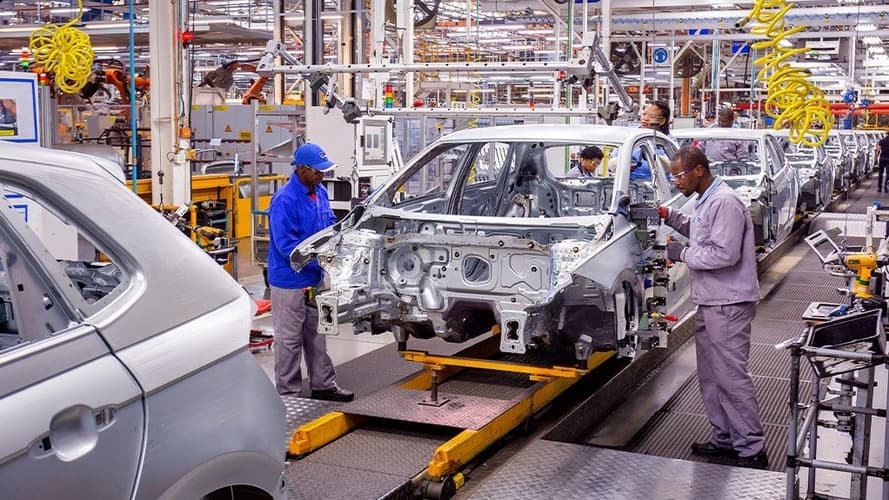In 2020, Ghana took a bold and ambitious step to redefine its industrial landscape with the introduction of the Ghana Auto Development Policy (GADP). Designed to position Ghana as a leading automotive hub in West Africa, the GADP aimed to establish a robust and competitive ecosystem for the automotive industry. It was not just about assembling vehicles but about transforming the country into a hub of innovation, local production, and economic growth.
At the heart of this policy was the vision to reduce the country’s dependence on imported vehicles while boosting local production of vehicle components. By creating a vibrant automotive supply chain, the GADP aimed to fuel Ghana’s growing vehicle assembly industry and set the country apart as a regional leader. The policy also sought to drive job creation, enhance vehicle safety standards, and generate long-term economic benefits.
In its first phase, the focus was on assembling passenger cars, SUVs, and light commercial vehicles such as pickups, minibuses, and cargo vans. Over time, the vision expanded to include medium and heavy-duty vehicles. In this article, we will explore the policies rolled out by the government to support component manufacturing.
Tax incentives
The GADP categorized assembly operations into Semi-Knocked-Down (SKD), Enhanced SKD, Completely-Knocked-Down (CKD), and Fully-Built-Units (FBUs), each with tailored incentives. A 10-year corporate tax holiday was one of the standout strategies to attract local and international businesses to manufacture components in Ghana. By reducing production costs and offering this enticing relief, the policy caught the attention of private investors eager to tap into this budding market.
The vision, however, went beyond manufacturing cars. It aimed to create an entire automotive ecosystem. Key to this effort was partnering with global and regional investors to develop a resilient supply chain. International collaborations brought not only financial investment but also technical expertise, training programs, and access to advanced technology. These partnerships became the backbone of capacity-building initiatives, helping Ghana’s industries gear up to meet global standards.
Vehicle financing scheme
Another critical initiative was the establishment of an asset-based vehicle financing scheme. This program sought to make locally assembled vehicles more affordable for Ghanaians, thereby increasing demand for vehicles with locally manufactured components. By boosting the market for locally produced parts, the policy indirectly supported the growth of component manufacturing.
Infrastructure development
The government also focused supporting the automotive industry. Efforts were made to improve industrial facilities and ensure a stable energy supply, both of which are essential for efficient manufacturing operations. However, challenges in this area remain, as many manufacturers still face infrastructure limitations.
In addition to these measures, the GADP introduced regulatory frameworks to ensure that locally manufactured components meet international safety and environmental standards. This move was aimed at enhancing the competitiveness of Ghanaian products in both domestic and export markets.
Despite its high ambitions, the journey has not been without challenges. The lack of industrial infrastructure, such as high-tech facilities and stable energy supplies, has posed significant hurdles. Manufacturers have struggled to access advanced equipment, which remains expensive and out of reach for many small and medium-sized businesses. Beyond the machinery, there’s also a skills gap. High-precision manufacturing requires a specialized workforce, which is still in short supply in Ghana. Coupled with fierce competition from cheaper imported vehicle components, local manufacturers face an uphill battle to make their mark.
Yet, even amidst these difficulties, there are success stories that reflect the potential of Ghana’s automotive future. One such example is the Kantanka Group, a local car manufacturer that has successfully incorporated locally sourced components into its vehicles. This achievement demonstrates how Ghanaian innovation can thrive under the right conditions. Additionally, the ripple effects of the GADP extend far beyond vehicle assembly. Industries like logistics, automotive training, and component manufacturing have experienced growth, creating jobs and equipping workers with valuable skills.
Looking ahead, Ghana’s journey toward becoming a regional automotive powerhouse requires addressing these challenges head-on. Investments in infrastructure are essential to provide manufacturers with the tools they need to succeed. Subsidies for acquiring advanced machinery could significantly level the playing field for local businesses. Stricter regulations on imports might give Ghanaian manufacturers the breathing room they need to establish themselves. Furthermore, doubling down on international partnerships could elevate the standards of local component production and bring Ghana closer to its goal of global competitiveness.
While the dream of becoming a regional leader in the automotive industry is still a work in progress, it is clear that the foundation has been laid. The Ghana Auto Development Policy has not only charted a promising course but also ignited a sense of purpose and ambition within the country. With continued investment, collaboration, and focus, Ghana is well on its way to steering both its economy and West Africa’s auto industry toward a brighter and more self-reliant future.




